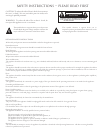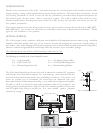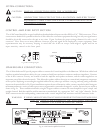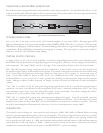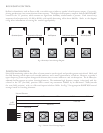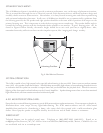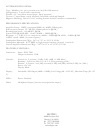
BOUNDARY CONTROL:
POSITION CONTROL:
Reflective boundaries, such as floors, walls, even table tops, reinforce a speaker’s low frequency output. Conversely,
placing speakers out into a room decreases bass response. The highest low frequency output is with the BOUNDARY
control in the “0” position, which assumes no significant boundary reinforcement is present. Each control step
attenuates low frequencies by 1.5 dB (at 50 Hz), with rapidly decreasing effect above 300 Hz. Refer to the diagram
in Fig. 6 for information on setting the control appropriately.
Near-field monitoring reduces the effect of room acoustics on the signal, and provides greater sonic detail. Mid- and
far-field listening reveals aspects of recorded ambience and is more representative of end use. However, a speaker’s
upper frequency power response changes with distance, due to room influences and air absorption. The A-20 may be
adjusted for flat response at various listening distances. The maximum high frequency output is obtained with the
control in the “FF” (far-field) position. Each control step attenuates 20 kHz by an additional .75 dB (towards
the near-field position) with no effect on frequencies below 3 kHz. See Fig. 7 for appropriate POSITION control
settings based on listening distances.
0
2
1
0
2
1
0
2
1
0
2
1
BOUNDARY
BOUNDARY
BOUNDARY
BOUNDARY
BOUNDARY
0
2
1
Quarter Space
Quarter/Half Space
Half Space
Half/Whole Space
Whole Space
Fig. 6. Boundary Control Settings Diagram
1M
0’
1.5M
2M
2.5M
3M
Near-field
Mid-field
Listener Distance
A-20
Monitor
Far-Field
POSITION
FF
NF
MF
POSITION
FF
NF
MF
POSITION
FF
NF
MF
POSITION
FF
NF
MF
POSITION
FF
NF
MF
Fig. 7. Position Control Settings Diagram




